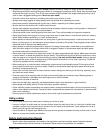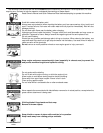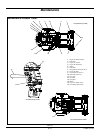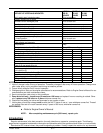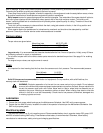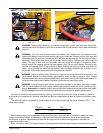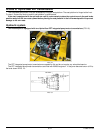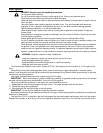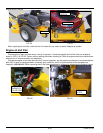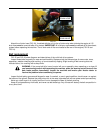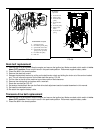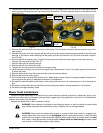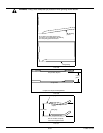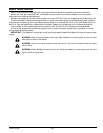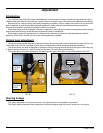
110907 01/09 9-15
Fuel system
DANGER: Observe usual fuel handling precautions:
Do not smoke while refueling.
Do not fill tank with engine running or while engine is hot. Clean up any gasoline spills.
Allow engine to cool before storing machine inside a building.
Keep fuel away from open flame or spark and store machine away from open flame or spark if there is
fuel in the tank.
Use extra caution when handling gasoline and other fuels. They are flammable and vapors are
explosive. A fire or explosion from gasoline can burn you and others and can damage property.
Refuel outdoors preferably, or in well ventilated areas.
Never attempt to start engine when there is a strong odor of gasoline fumes present. Locate and
correct cause.
Store gasoline in an approved container and keep it out of the reach of children. Never buy more than
a 30 day supply of gasoline.
Always place gasoline containers on the ground away from your vehicle before filling.
Do not fill gasoline containers inside a vehicle or on a truck or trailer as interior carpets or plastic truck
bed liners may insulate the container and slow the loss of any static charge.
When practical, remove equipment from the truck or trailer and refuel the equipment with its wheels on
the ground. If this is not possible, then refuel the equipment on the truck or trailer using a portable
container and not a gasoline dispenser nozzle. If a gasoline dispenser nozzle must be used, keep the
nozzle in contact with the rim of the fuel tank or container opening at all times until fueling is complete.
WARNING: Gasoline is harmful or fatal if swallowed.
Long-term exposure to vapors can cause serious injury and illness.
Avoid prolonged breathing of vapors.
Keep face away from nozzle and gas tank or conditioner opening.
Keep gas away from eyes and skin.
The fuel tanks are located in the tractor’s fenders (FIG. 20). Total capacity for the fuel tanks is 10 U.S. gallons (38
liter).
When filling the fuel tanks disengage deck clutch, place control levers in park brake position, and stop tractor
engine. Clean around the fuel tank cap and remove the cap and begin filling. When finished, screw the cap on securely
and wipe up any spilled gasoline.
Use regular unleaded gasoline with an octane rating of 87 or higher.
IMPORTANT: Never use methanol, gasoline containing methanol, or gasohol containing more than 10% ethanol
because the fuel system could be damaged. Do not mix oil with gasoline.
Using a fuel stabilizer/conditioner in the tractor can provide benefits such as:
1. Keeps gasoline fresh during storage of 90 days or less. For longer storage, drain the fuel tanks.
2. Cleans the engine during operation.
3. Eliminates gum-like varnish buildup in the fuel system.
IMPORTANT: Do not use fuel additives containing methanol or ethanol.
Add the correct amount of gas stabilizer/conditioner to the gas. Follow the gas stabilizer/conditioner manufacturer’s
directions for best results.
The fuel filter (FIG. 21) is installed in the fuel line between fuel valve and engine fuel pump on the front of the engine.
Replace filter annually or after every 100 hours of operation, whichever occurs first. For fuel filter removal refer to the



